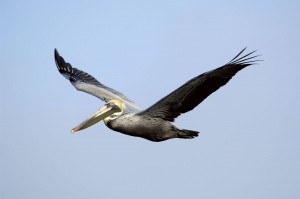
Although mankind has conquered the skies with airplanes, we have yet to match up to our winged animal counterparts who fly on their own. And now, scientists have determined that we never will: it is mathematically impossible for humans to fly like birds.
A bird can fly because its wingspan and the wing muscle strength are in balance with its body size. It has a lightweight skeleton with hollow bones, which puts a smaller load on its wings. A bird also has air sacs connected to its lungs, which makes it even lighter and allows for easy passage of air through its lungs during flight.
On the other hand, calculations of the ratio between human size and strength reveal that our species will never be able to take flight unaided. As an organism grows, its weight increases at a faster rate than its strength. Thus, an average adult male human would need a wingspan of at least 6.7 meters to fly. This calculation does not even take into account that these wings themselves would be too heavy to function.
There is a reason that a 6-year-old girl can do more pull-ups than her 40-year-old father — she may be weaker, but her strength-to-size ratio is still greater than her father’s ratio. In other words, humans are not too large to fly, but our strength simply cannot support our weight in flight.
